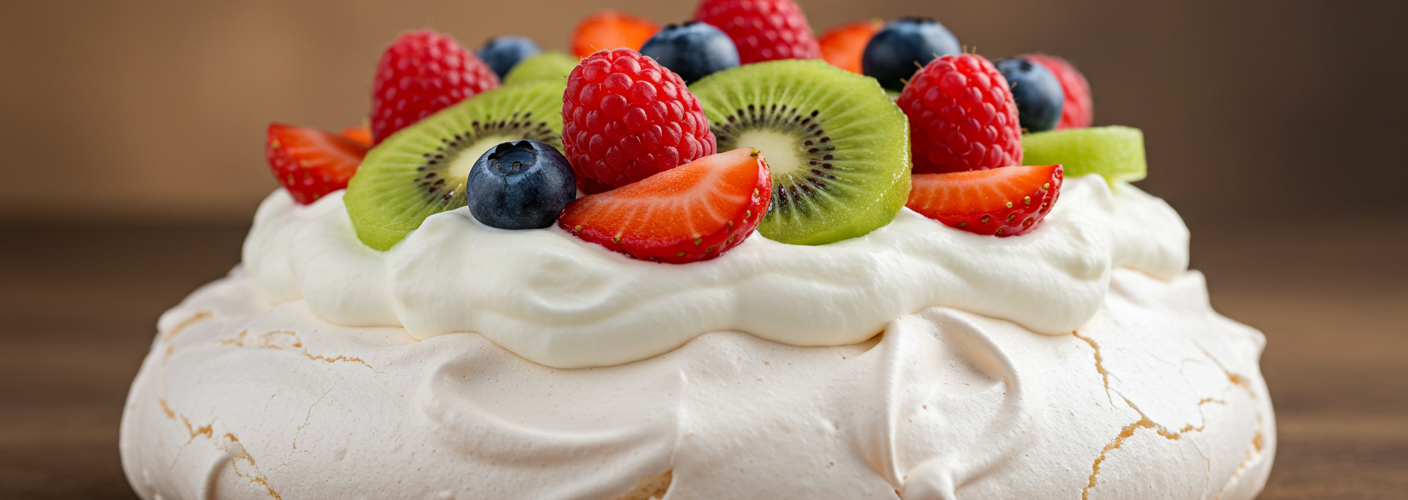Pavlova, a dessert that grace the tables of celebrations and gatherings, is as enchanting as it is delicious. This light, airy confection, crowned with minuscule slices of fresh fruit and a dollop of whipped cream, is named after the famed Russian ballerina Anna Pavlova. It is said that the dessert was created in her honor during her tour of Australia and New Zealand in the 1920s. This classic recipe has since become an iconic sweet treat, especially in these two countries and is beloved by dessert aficionados worldwide.
At first glance, a Pavlova may appear simple, but its complex symphony of textures and flavors is anything but ordinary. The base of Pavlova is made from a delicate meringue, a concoction of egg whites and sugar, that is whipped to airy perfection. The trick lies in achieving a crisp outer shell while maintaining a marshmallow-like softness within—making the perfect Pavlova a true testament to the baker’s skill. The process typically requires patience and precision, as humidity can affect the meringue’s ability to set correctly.
To craft the perfect Pavlova, one must start with fresh, room-temperature egg whites. These should be beaten until they form stiff peaks, at which point sugar is slowly incorporated until the mixture develops a glossy sheen. A hint of cornstarch is often added, providing stability, while a splash of vinegar or lemon juice helps enhance the meringue’s texture, yielding a delightful contrast between the crunchy and chewy layers.
One of the joys of a Pavlova lies in its versatility. Topped with an array of fruits, the choice can vary greatly. Seasonal berries—a medley of strawberries, blueberries, and raspberries—bring vibrant color and a slight tartness that balances the sweetness of the meringue. Other popular choices include kiwis, passionfruit, or even tropical fruits like mangoes and pineapples for a refreshing twist. The crowning glory of whipped cream adds a luscious creaminess that unites the dish and elevates it to heavenly heights.
Pavlova is not just aesthetically pleasing; it is also a gluten-free dessert, making it an excellent choice for those with dietary restrictions. It can easily be adapted to cater to a variety of preferences, whether one opts for a lighter chantilly cream or a rich mascarpone blend flavored with vanilla.
When it comes to serving Pavlova, presentation is key. The meringue base can be made ahead of time, allowing one to prepare a delightful assembly just before serving. Start with a generous dollop of cream spread across the top of the meringue and artfully arrange the colorful fruits on top. A final touch—a drizzle of fruit coulis or a sprinkle of powdered sugar—can add an extra note of elegance.
In conclusion, Pavlova is a dessert that embodies joy and celebration. Its ethereal lightness, combined with the vibrancy of fresh fruit and the richness of whipped cream, makes it a favorite for various occasions—from birthdays to festive season feasts. Whether enjoyed with a cup of tea or shared among friends and family at a gathering, Pavlova is a delightful treat that promises to impress both the eyes and palate, leaving everyone counting down to the next bite.




Add comment